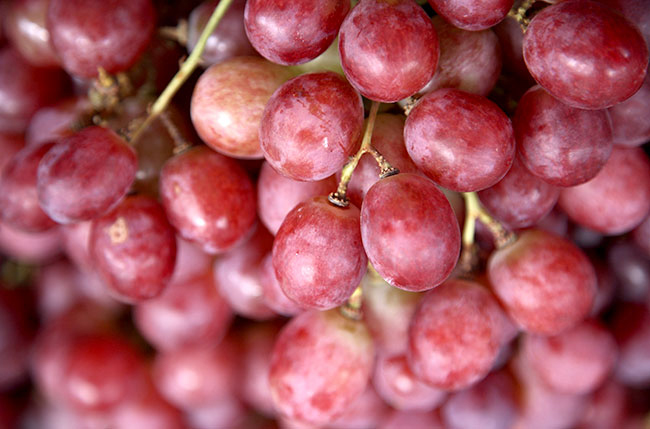
Archaeological evidence of wine which dates back to 5000 BC suggests that grapes have been cultivated for human use for at least 8000 years. The earliest evidence of winemaking and, by inference, grape cultivation, was found in the nation of Georgia. There are species of grape native to Asia, Europe, and North America. Types of grape were included in the diet of Native Americans, but large scale grape cultivation likely began in the Near East before spreading throughout the Mediterranean. Winemaking was a natural innovation because yeast occurs naturally on the skin of grapes, and fermenting grape juice was a straightforward endeavor for early civilizations. The Egyptians were the first literate civilization to leave records of grape cultivation. The Phoenicians, Greeks, and Romans all grew purple grapes which are the result of generations of breeding, indicating that these ancient civilizations practiced careful and methodological cultivation of the grape.
Grapes are categorized as either American or European, with further distinctions that indicate their uses: Table, wine and raisin grapes. Table grapes are eaten raw on their own or in various recipes, both sweet and savory. Grapes used for winemaking are much higher in sugar content than other grapes and have very thick skin. Raisin grapes are used for making dried fruit. The majority of grapes produced in the world are wine grapes, and most wine grapes are grown in France, Italy, and Spain. Concord grapes dominate the juice market. The most popular red table grapes include black Corinth, red globe and red flame, and popular green ones are perlette and Thompson Seedless (known as Sultanas outside of North America.)
Table grapes are a perfect snack when raw, but they can be used in a multitude of recipes. Fruit salads generally include green or red grapes, but try adding sliced grapes to a mixed green salad for a pop of flavor. Add grapes to yogurt along with some other fruits and berries for a tasty dessert. Grapes can be included in savory dishes as well for some added flavor and juicy texture. For example, a curry recipe can include grapes for a burst of sweet flavor, and chicken roasted with grapes makes for a sweet, light summer-time meal. Roasted grapes are a light, tasty side dish made by simply tossing grapes in olive oil and herbs and roasting until tender and the skin blisters. Cooking sweetens grapes’ flavor by caramelizing the sugars and dehydrating the grapes, concentrating the sweetness.
Select grapes that are firm to the touch and feel heavy for their size. Choose grapes with firm stems that are strongly attached to the grapes. These factors indicate grapes’ level of moisture and freshness. Dehydrated grapes feel light and do not cling to their stems well. Store fresh grapes in airtight plastic bags or containers. Grapes stay fresh longest at temperatures just above freezing. Do not wash grapes until they are ready to be used, as storing them wet will adversely affect their texture and flavor. Dry grapes stored in airtight containers at about 33 degrees Fahrenheit will stay fresh for about three weeks. When using only a portion of a bunch of grapes, snip a portion of the bunch off with scissors rather than pulling individual grapes off the stems. This will prevent the remaining stems and grapes from losing moisture as quickly. Always wash fresh produce before use.


 BACK TO PRODUCTS
BACK TO PRODUCTS